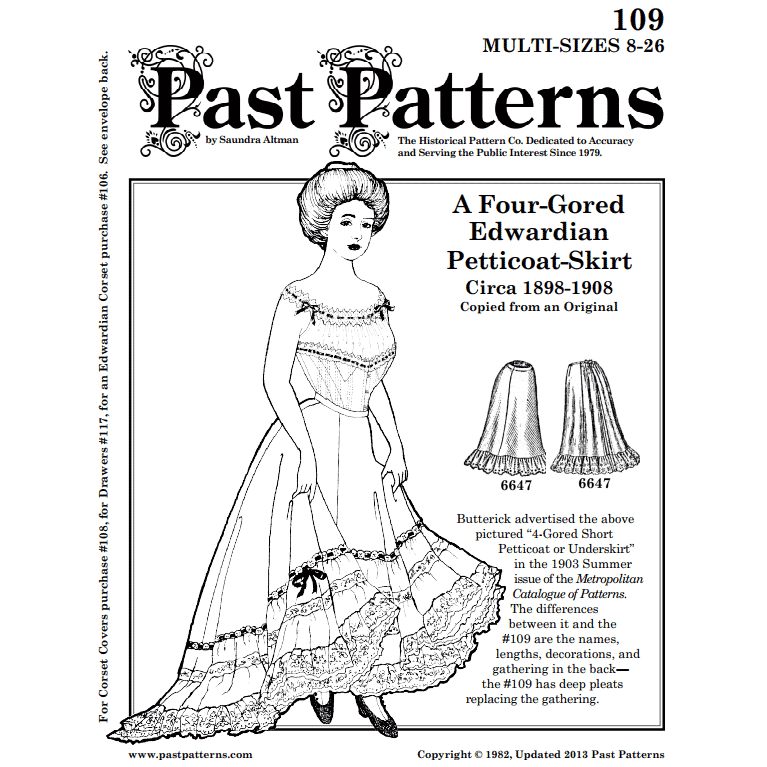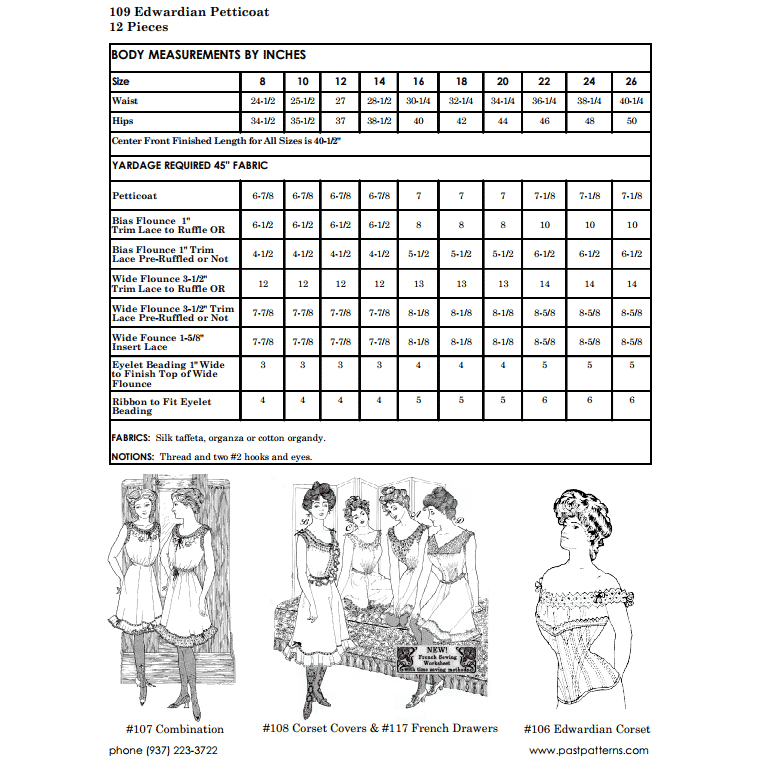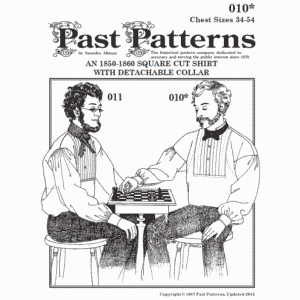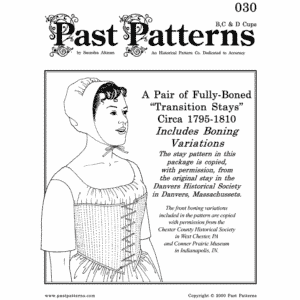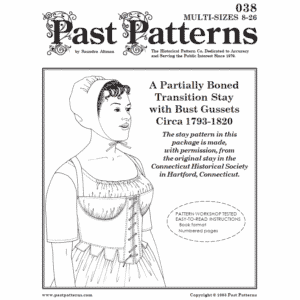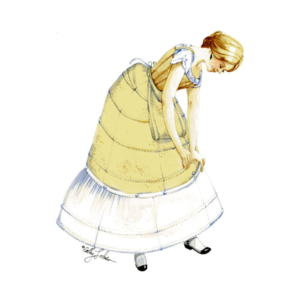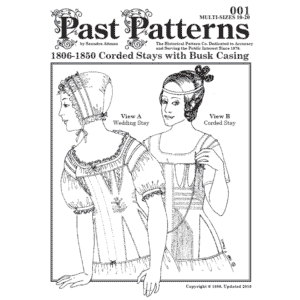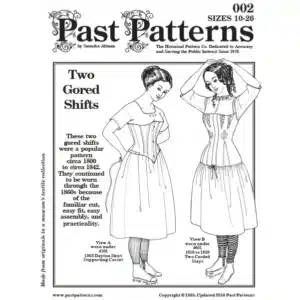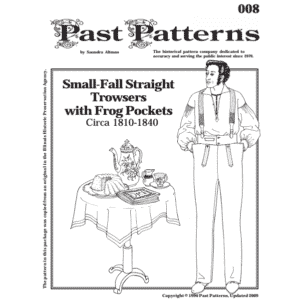Early 1900s Petticoat Sewing Pattern – Edwardian Four-Gored Undergarment | Waist Sizes 24-40 | Past Patterns 0109
$19.00
Historically accurate Early 1900s Petticoat sewing pattern featuring a four-gored design with decorative lace details. Includes sizes 8-26 (waist 24½”-40¼”).
Get Free Shipping
On all US Orders over $50!
Early 1900s Petticoat Sewing Pattern – Edwardian Four-Gored Undergarment | Waist Sizes 24-40 | Past Patterns 0109
$19.00
Historically accurate Early 1900s Petticoat sewing pattern featuring a four-gored design with decorative lace details. Includes sizes 8-26 (waist 24½”-40¼”).
Get Free Shipping
On all US Orders over $50!
All of our patterns tell a story.
Why Choose This Pattern?
Historical Early 1900s Petticoat Sewing Pattern: Elegance of Edwardian Undergarments
This exquisite Early 1900s Petticoat sewing pattern is a treasured original Past Patterns design, first published in 1982 and thoughtfully updated for today's sewists. Our Early 1900s Petticoat pattern captures the refined elegance that defined Edwardian undergarments while offering modern sizing and detailed instructions.
The Fascinating History of Edwardian Petticoats
Prior to reintroducing this Early 1900s Petticoat pattern, we enhanced it significantly by updating sizes to include 8 through 26, adding comprehensive fabric layouts, detailed assembly diagrams, and proper lace identification information. The pattern is based on meticulous research from the 1903 Metropolitan Catalogue of Patterns published by The Butterick Publishing Co., where it appeared as a "4-Gored Short Petticoat or Underskirt."
In the early 20th century, women's fashion required multiple layers beneath their gowns. A chemise was worn under the corset for cleanliness, followed by drawers, then a petticoat or petticoat-skirt over which came the corset cover. This Early 1900s Petticoat pattern recreates an essential foundation garment from this fascinating period of women's dress history.
Beautiful Yet Surprisingly Simple Design
While this Edwardian Early 1900s Petticoat pattern appears complex with its elaborate embellishments, it follows the characteristic Edwardian approach to design – extravagant decorative elements applied to a foundation of practical simplicity. Beneath the delicate lace and ribbon embellishments lies a straightforward four-gored shape with a ruffle.
The construction technique is particularly interesting – lace is positioned on the fabric, and the fabric behind the lace is cut away. This creates the beautiful openwork effect while maintaining the structural integrity of the garment. The petticoat was primarily machine-sewn, making it accessible to sewists with intermediate skills.
Complete Package Contents
Your Early 1900s Petticoat sewing pattern includes:
- Original artwork on the front cover
- Comprehensive fabric and sizing charts on the back cover
- Historical background notes on Petticoat-Skirts circa 1903
- Detailed fabric layout guides for all size ranges
- Clear assembly drawings showing construction details
- Well-tested written and illustrated instructions
- 4 sheets of computer-generated patterns (36"x47", 36"x50", 36"x45" and 36"x41")
Size and Materials Information
This Early 1900s Petticoat pattern includes multiple sizes to accommodate a range of measurements:
- Sizes 8-26
- Waist sizes from 24½" to 40¼"
- Hip sizes from 34½" to 50"
Fabric requirements for white cotton organdy, silk taffeta, or lightweight cotton (45" width):
- Sizes 8-14: 6⅞ yards
- Sizes 16-20: 7 yards
- Sizes 22-26: 7⅛ yards
The pattern also includes detailed requirements for lace edging, insert lace, lace beading, and ribbon for all size ranges, ensuring you can accurately plan your materials before beginning your project.
Skill Level and Construction Techniques
This Early 1900s Petticoat sewing pattern is suitable for intermediate sewists who have experience with basic techniques. The construction requires knowledge of creating French seams, flat fell seams, and self-bound hems. The total number of pattern pieces (12) is manageable, though the decorative elements require patience and attention to detail. The written instructions are clear but not illustrated step-by-step, making some previous sewing experience beneficial.
Historical sewing techniques featured in this pattern include:
- French seams for clean interior finishing
- Placket construction typical of early 20th century garments
- Habit back pleating to create the characteristic Edwardian silhouette
- Traditional lace application methods including insertion lace techniques
According to fashion historian Joan Severa at the Metropolitan Museum of Art, petticoats from this era were crucial in achieving the proper silhouette for outer garments, particularly with the S-curve posture popular during the Edwardian period.
Create a Complete Edwardian Ensemble
For a comprehensive Edwardian undergarment collection, consider pairing this Early 1900s Petticoat pattern with these complementary Past Patterns designs:
Our patterns are printed on high-quality 20 lb. white paper and packaged in a reusable plastic sleeve. We always strive to offer the most reasonable shipping rates for domestic and international orders. Multi-item purchases are automatically adjusted for combined shipping.
Prefer a digital download? Get this Early 1900s Petticoat pattern in our downloadable format here.
Experience Historical Sewing with Museum-Quality Patterns
This meticulously researched Early 1900s Petticoat sewing pattern allows you to create a documented historical garment while enjoying the satisfaction of traditional sewing techniques. The resulting petticoat provides both historical accuracy and practical functionality for historical costumers, reenactors, and enthusiasts of period garments.
Recreate a piece of fashion history with our comprehensive Early 1900s Petticoat pattern — a perfect blend of documented historical authenticity and accessible sewing instruction.
Original Content by Past Patterns 1979-2025. All rights reserved.
Additional information
| Weight | 14 oz |
|---|---|
| Dimensions | 13 × 10 × 3 in |
This item is for single, non-commerical usage. If you want to mass produce items, please contact us.
Sizing Information
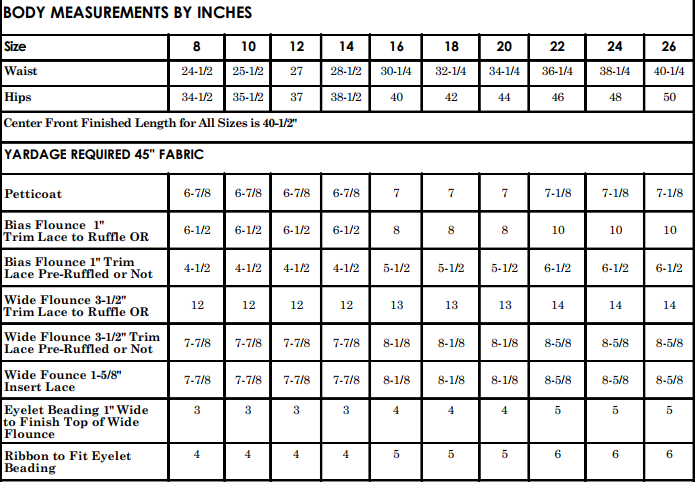
(Metric size sheet opens as a PDF in a new browser tab)
Preferred Vendors
Past Patterns works with vendors from all over the world to help us replicate the amazing articles of clothing. Now you can too!
Visit our preferred vendors page to order directly from some of our top recommended suppliers.
FAQ's
(Frequently asked questions)
Why are both Trowsers and Trousers listed on site?
Over the last 200 years, much like the human body, our style of language has changed. For vintage patterns, we attempt to use the language of the day where possible.
Can you grade (edit) a Vintage Revival pattern for my size?
please contact us with the specific pattern number and the specifications you require. We have staff available for this for an additional fee.
What sizes do Past Patterns patterns come in?
Our patterns, with some exceptions, are manufactured in sizes 8 through 26 for women and sizes 34 through 54 for men. Most patterns are multi-sized. For a complete listing of measurements in inches see the size chart.
Do you have vintage patterns (manufactured prior to 1950) that you want to sell?
we are always on the lookout for original, American designed, vintage patterns especially for categories outside of current items. We are interested if you have 1 pattern or 1000 patterns. Give us a call to discuss.
Why is my pattern size different from my off the rack dress size?
We use the U. S. Board of Standard Measurements to size our patterns. The ready made clothing manufacturers have their own set of sizes developed from their own statistics. For a complete listing of measurements in inches see the size chart.
How are the patterns packaged?
We package our patterns in two forms: Bond Paper and Tissue. Except for the Tissue patterns, each is slipped into a reusable plastic sleeve. Many contain documentation in the form of Historical Notes or the printer ie., Butterick. Because the patterns are printed in house to order, they can take from three to seven days. Tissue patterns, which are printed out of house, are available to ship immediately.
What does a Corset Kit contain in addition to the Corset pattern?
In addition to the pattern, the kits contain everything you need to make the corset except the thread. The kits contain, according to their type, fabric and lining, stays, clasp or busk board, back lacing, tape for finishing the edges, trim lace, ribbon, leather, tin stock, waist tape, punch and setter, eyelets, marking pencils, cording, reed and a loop turner.
Need a pattern in your language?
we can translate our instructions into just about any language
Have an old and incomplete Past Patterns item. What can I do?
The answer depends on if the pattern is still in production or not. If it is, please mail us the old pattern and we will ship you a copy of the latest pattern for a minimal fee along with normal shipping charges. If the item is no longer in production, we would need to know exactly what you have to determine the best course of action to help you.
What is the difference between a Past Patterns original pattern and a Vintage Revival pattern?
The Past Patterns originals were designed in house and based upon the research, disassembly and time of Saundra Ros Altman. These designs come from finds all over the United States reaching from San Diego, California to the Smithsonian Museum in Washington, DC. She created the initial patterns, the sizing charts and the instruction content. Many of the these patterns are multi-sized or are available in various sizes. For the most part, these designs are done taking into account the modern human body's shape, height and weight. The Vintage Revival patterns are traces or copies of an old, mass produced pattern; the first mass produced patterns came out in the 1850s. For the most part, you get exactly what came in the original package; in some cases, Saundra has appended historical notes to the instructions. The Vintage Revivals patterns, being copies of the originals, generally only come in one size and are based upon the size and shape of the human body from the era the pattern came from.
What software do you use to create patterns?
We utilize PW Studio for our designs. Isabelle Lott, a contributor over the years to Past Patterns, is the owner of the company and will be happy to answer an software related questions you have. Her software is available for licensing.
What measurements do I need to know to order a Corset Kit?
The bust and back length. The back length is measured from the prominent bone at the base of the neck to the natural waistline.
Where can I see the appropriate clothing fabrics for the 18th and 19th centuries?
You can see 1740 through 1940 fabrics in a book titled "Textile Designs" by Susan Meller and Joost Elffers. The subtitle states, "Two Hundred Years of European and American Patterns for Printed Fabric by Motif, Style, Color, Layout and Period and 1,823 Illustration in Color." What they don't say is that 90% of the swatches pictured are life size. The ISBN is 0-8109-3853-7. A second book is Wearable Prints, 1740-1860, History, Materials, and Mechanics by Susan W. Greene. The ISBN is 978-1-60635-124-6. Great books! Order it from your local library that has interlibrary loan capability if you cannot afford the price. There are now many sources for appropriate fabric through the Internet.
Where can I find antique patterns to purchase?
On the Internet try: "Patterns from the Past."
Need a pattern tomorrow?
we do offer expedited domestic shipping for extra fees. We can also expeditie international shipments but delivery dates overseas cannot be promised.
Becoming a Wholesalers of our patterns
We offer Wholesalers significant discounts that will allow both your and our businesses to flourish.
Why don't we sell PDFs of our patterns - First due to piracy. We have spent over 40 years creating and tracing these patterns along with researching them. We print and ship all of our patterns ourselves. If we started sending out PDFs, in no time, copies of our Intellectual Property would be all over the internet and we would be out of business. Second, some of our patterns are constantly being updated. We want our clients to get the BEST POSSIBLE version of our products.

